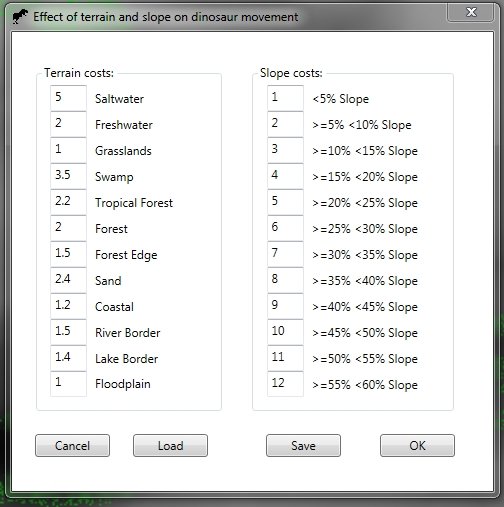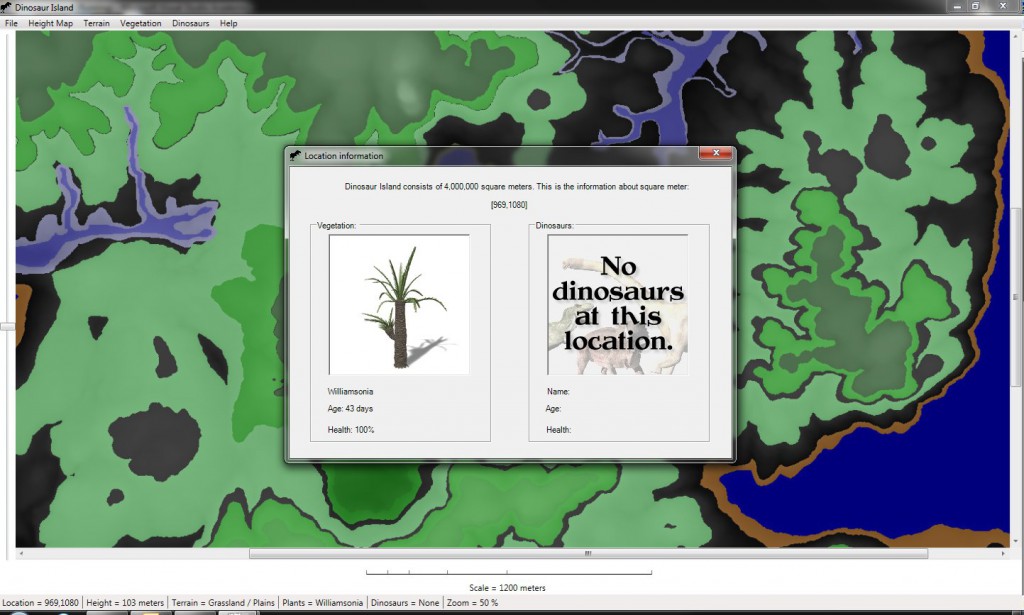
A slide from my comprehensive examination explaining how to calculate the cost of traversing different terrain types. Different terrain types have different ‘costs’ associated with them. When a vehicle (or a dinosaur) travels across a map divided into a grid the distance is calculated (axis or diagonal) and then multiplied by the terrain modifier. (Click to enlarge.)
There are a lot of fascinating web sites that attempt to answer the question, “how fast could a dinosaur run?” One site (The University of Sheffield) even has an online calculator (click here). However, all of these sites – and the University of Sheffield calculator – are based on measuring the stride (the space between dinosaur footprints) and then using a formula (v = 0.25*g0.5*SL1.67*h-1.17 where (v) is the animal’s speed, (h) its hip height and its (SL) its stride length) to calculate the speed of a particular dinosaur in a particular place ‘frozen in time’.
Was the dinosaur running as fast as she could? What kind of terrain was the dinosaur walking on? Since the measurements are made from preserved dinosaur trackways, the dinosaur was probably walking across wet sand. Dinosaurs could certainly run faster on dry flat land than on swampy land. What effect did walking up a slope have on a dinosaur’s speed?

Dialog box from Dinosaur Island that allows the user to modify the cost of traversing different terrain types and climbing up slopes.
Above is a dialog box just added to Dinosaur Island for adjusting the values of the ‘cost’ of walking across various terrains and the cost associated with climbing slopes of different steepness. These costs are used in the least weighted path algorithm that we discussed yesterday (see How a dinosaur is not like a tank). Least weighted path algorithms are what make computer controlled characters (like dinosaurs) behave naturally and make intelligent decisions. As Ed Isenberg commented yesterday (here) there is no reason to think that dinosaurs, especially predators, could not make intelligent decisions about the most efficient way to get to their dinner.
Least weighted path algorithms and terrain and slope costs, are some of the methods that ensure that Dinosaur Island will be the most accurate and detailed simulation of life in the Cretaceous yet created.
 Below is a screen capture of the current values that we are using in Dinosaur Island for least weighted path calculations. These are the values that were used when calculating the movement paths displayed here.
Below is a screen capture of the current values that we are using in Dinosaur Island for least weighted path calculations. These are the values that were used when calculating the movement paths displayed here.



